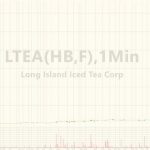This year, the two monetary policy aspects we’ve been focused on the most are President Trump’s decision on who the Fed chair will be and what the ECB will do with the CSPP (corporate sector purchase program) and the PSPP (public sector purchase program). The big decisions are both going to happen in the next few weeks, just as earnings season gets going. That’s quite the trio of events for the market to digest. There could be volatility in the end of October. If Powell is picked, the QE is extended for longer than expected at a high rate, and earnings growth is 6% or better with good guidance, stocks will do well. A Santa Clause rally could finish out the year on a positive note making it the first year without a 3% correction since 1928. The current streak is at 233 days which is 8 days fewer than the longest streak. The 22% gain is the second largest gain (largest is 30.4%).
The expectation is for the ECB to make the decision on guidance for the 2018 QE program on October 26th. The chart below shows the baseline expectation for the policy. As you can see, it shows the program shrinking to 40 billion euros per month for the first 6 months of the year. Then it slows to zero by the end of the year. I’m worried about volatility in the stock market when the QE starts heading towards zero in July. At that point, the Fed will be nearing the peak of its unwind.

There has been a narrative shift in what QE means for the stock market. The bears have been saying QE has boosted stock prices. The bulls were happy to go along with that argument because the bears were actually making a bullish case for stocks in the near term (and bearish in the long term). Now that this unprecedented QE policy will end for the ECB in 2018 and the Fed is doing an unwind, the bulls need to take the stance that QE never caused the rally in the first place. The narrative is that QE was a placebo effect for the market which got the animal spirits going. If that’s the case, unwinding the balance sheet and the ECB tapering won’t affect stocks. That’s a tough case to make, in my opinion, because this year has had the most QE ever when you add up all the major central banks. As I mentioned, this year is about to be the first year without a 3% correction. That calmness is occurring despite weather catastrophes, political unrest in America, and a sharp earnings growth deceleration in Q3.

















Leave A Comment